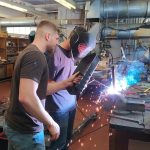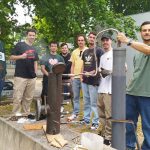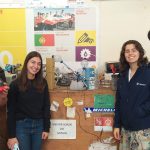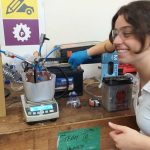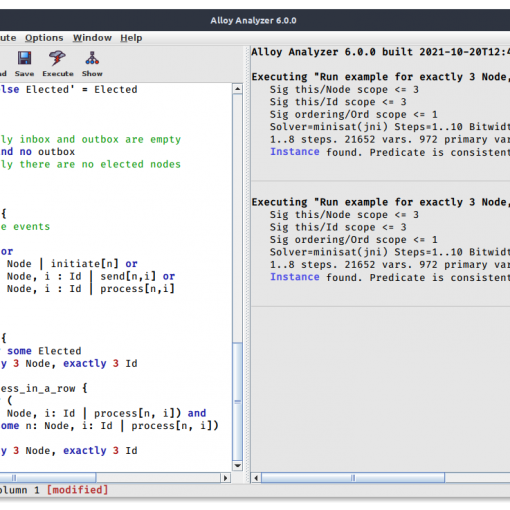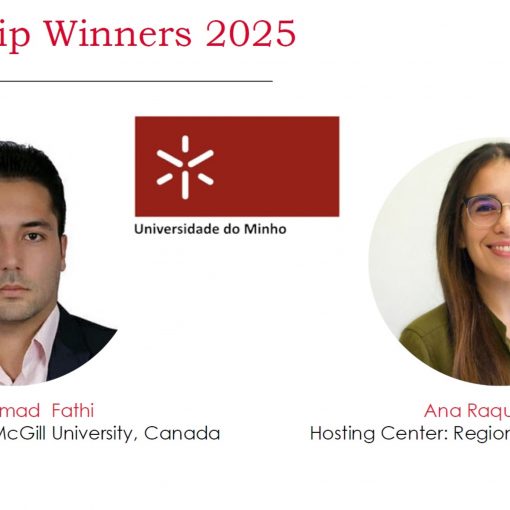The first-year students of the Master’s Degree in Mechanical Engineering, Area of Specialisation in Energy and Environmental Technologies built prototype demonstrators of two technologies for sustainability in the Thermochemical Processes course unit.
One of the demonstrators produces so-called “green hydrogen” from the electrolysis of water. The term “green” is due to the fact that this technology is especially suited to harnessing, through chemical storage, the excess electrical production from intermittent renewable sources such as wind or solar photovoltaics. This electricity is used to transform water into hydrogen for later use, either in a fuel cell or in combustion processes free of greenhouse gas emissions.
Students João Dias, Bruna Sousa, Joana Gonçalves, João Morado, João Fernandes, Mariana Castro, Mariana Antunes, Pedro Magalhães and Rodrigo Carvalho were inspired by some ideas available online to design and build the demonstrator from scratch. It was a split cell architecture, in which hydrogen and oxygen are extracted separately for safety reasons. They used the knowledge learnt in the course on thermochemical phenomena taught by lecturer Francisco Brito from the Department of Mechanical Engineering (DEM), and design and manufacturing techniques learnt on the course to build electrodes out of stainless steel sheet cut by LASER, 3D printing and CNC machining. The result was an electrolyser with three pairs of positive/negative electrodes immersed in an electrolyte based on an aqueous mixture of sodium hydroxide, with separate production of hydrogen and oxygen in the negative and positive electrodes, respectively.
The other project carried out by the students consisted of building a biomass gasifier. This technology makes it possible to convert solid fuels with low added value, such as residual forest biomass, into gaseous fuels (production gas or synthesis gas, in its purified version). These fuels can, for example, be burnt in a motor-generator and produce heat and electricity with neutral greenhouse gas emissions.
The gasifier was built by students Pedro Ferreira, Dinis Pereira, Eduardo Correia, Filipe Vaz, Luís Lima, Nuno Guimarães, Nuno Sousa, Rafael Gomes and Ricardo Vieira. With the help of the lecturer and the resources of the DEM workshops and the DEM’s Mobility and Applied Thermodynamics Laboratory (LaMoTA), the students built a steel updraft gasifier with the help of the machining and welding processes of senior technician Filipe Marques and Robert Chivu, a PhD student from the University of Galati (Romania), who at the time was doing an internship at LaMoTA.
Although the demonstrators built still have some limitations due to the short time available for their development, at the end of the semester it was possible not only to generate hydrogen and production gas in the two demonstrators, but also to burn them, to the great satisfaction of the students.
According to Francisco Brito, who took on responsibility for this course for the first time, this type of project carried out as part of courses with a laboratory practice component proved to be very motivating for the students, who generally performed very well in the course.
The lecturer also noted that the students who left comments on the pedagogical surveys mentioned their satisfaction with the course and mentioned how it helped them understand the concepts covered in class. Francisco Brito therefore intends to continue these projects in future editions of the course and in master’s dissertations that will begin in these areas, integrating them with the research being carried out in the area of applied thermodynamics at LaMoTA and at other institutions that are already working with some of these technologies with industrial partners, such as the Centre for Waste Valorisation (CVR).
